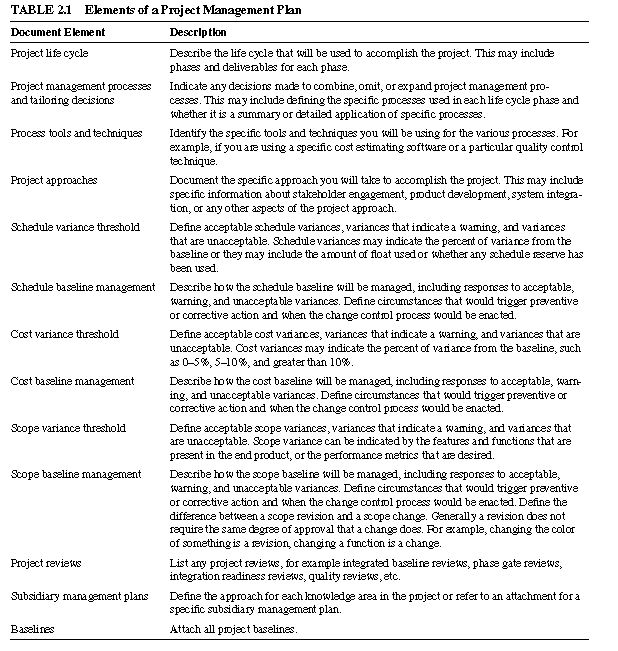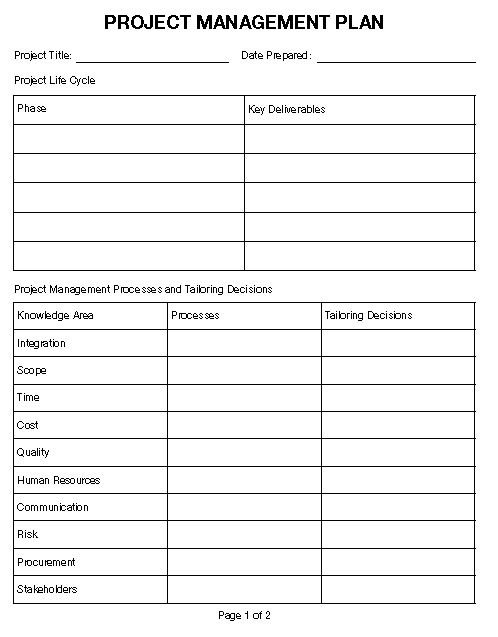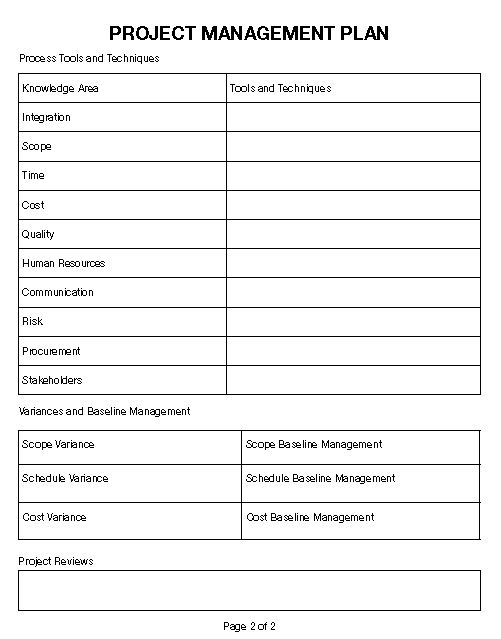Users Online
· Members Online: 0
· Total Members: 188
· Newest Member: meenachowdary055
Forum Threads
Latest Articles
Articles Hierarchy
02 Project Planning Forms
2.0 PLANNING PROCESS GROUP The purpose of the planning process group is to elaborate the information from the project charter to create a comprehensive set of plans that will enable the project team to deliver the project objectives. There are 24 processes in the planning process group.
• Develop Project Management Plan
• Plan Scope Management
• Collect Requirements
• Defi ne Scope
• Create WBS
• Plan Schedule Management
• Defi ne Activities
• Sequence Activities
• Estimate Activity Resources
• Estimate Activity Durations
• Develop Schedule
• Plan Cost Management
• Estimate Costs
• Determine Budget
• Plan Quality Management
• Plan Human Resource Management
• Plan Communications Management
• Plan Risk Management
• Identify Risks
• Perform Qualitative Analysis
• Perform Quantitative Analysis
• Plan Risk Responses
• Plan Procurement Management
• Plan Stakeholder Management
The intent of the planning process group is to at least:
• Elaborate and clarify the project scope
• Develop a realistic schedule
• Develop a realistic budget
• Identify project and product quality processes
• Plan the human resource aspects of the project
• Determine the communication needs
• Establish risk management practices
• Identify the procurement needs of the project
• Determine how to manage stakeholder engagement
• Combine all the planning information into a project management plan and a set of project documents that are cohesive and integrated
Planning is not a one-time event. It occurs throughout the project. Initial plans will become more detailed as additional information about the project becomes available. Additionally, as changes are approved for the project or product, many of the planning processes will need to be revisited and the documents revised and updated. Many of the forms in this section provide information needed for other forms. The form description indicates from where information is received and to where it goes.
The forms used to document planning information include:
• Project Management Plan
• Scope Management Plan
• Requirements Management Plan
• Requirements Documentation
• Requirements Traceability Matrix
• Project Scope Statement
• Assumption and Constraint Log
• Work Breakdown Structure
• Work Breakdown Structure Dictionary
• Schedule Management Plan
• Activity List
• Activity Attributes
• Milestone List
• Network Diagram
• Activity Resource Requirements
• Resource Breakdown Structure
• Activity Duration Estimates
• Duration Estimating Worksheet
• Project Schedule
• Cost Management Plan
• Activity Cost Estimates
• Cost Estimating Worksheet
• Bottom-Up Cost Estimating Worksheet
• Cost Baseline
• Quality Management Plan
• Quality Metrics
• Process Improvement Plan
• Responsibility Assignment Matrix
• Roles and Responsibilities
• Human Resource Management Plan
• Communications Management Plan
• Risk Management Plan
• Risk Register
• Probability and Impact Assessment
• Probability and Impact Matrix
• Risk Data Sheet
• Procurement Management Plan
• Source Selection Criteria
• Change Management Plan
• Stakeholder Management Plan
Some forms in this section are not explicitly described in the PMBOK® Guide, but they are useful in planning and managing a project. Use the forms here as a starting point for your project. You should tailor the forms to meet the needs of your project by editing, combining, or revising them.
2.1 PROJECT MANAGEMENT PLAN The project management plan describes how the team will execute, monitor, control, and close the project. While it has some unique information, it is primarily comprised of all the subsidiary management plans and the baselines. The project management plan combines all this information into a cohesive and integrated approach to managing the project. Typical information includes:
• Selected project life cycle
• Processes used to manage the project and information on how they have been tailored
• Tools and techniques that will be used in the project management processes
• Specifi c approaches to meet project objectives
• Variance thresholds
• Baseline management
• Timing and types of reviews
The project management plan contains plans for managing all the other knowledge areas as well as other specific aspects of the project. These take the form of subsidiary management plans and can include:
• Scope Management Plan
• Schedule Management Plan
• Requirements Management Plan
• Cost Management Plan
• Quality Management Plan
• Human Resources Management Plan
• Communications Management Plan
• Risk Management Plan
• Procurement Management Plan
• Stakeholder Management Plan
• Change Management Plan
• Configuration Management Plan
• Process Improvement Plan
The project management plan also contains baselines. Common baselines include:
• Scope baseline
• Schedule baseline
• Cost baseline
In addition, any other relevant, project-specifi c information that will be used to manage the project is recorded in the project management plan. The project management plan can receive information from all the subsidiary management plans and baselines. Because it is the foundational document for managing the project it also provides information to all subsidiary plans. In addition, the project management plan provides information to all other integration processes and the work performance information from all the control processes. You can use the element descriptions in Table 2.1 to assist you in developing a project management plan. 



